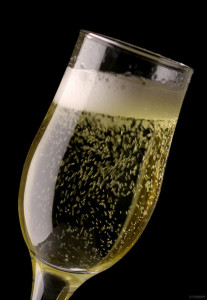Pet-nat is the latest term you should add to your wine vocabulary if you want to hang with the cool kids. The term is a (convenient) abbreviation for the more elaborate “pétillant-naturel”.

“Pétillant-naturel” translates as “naturally sparkling” and is a French type of wine or rather a French way of producing sparkling wine. It’s an ancestral way of producing wine, which has been making a comeback since the nineties.
Pét-nat is made in a completely different way than Champagne or Prosecco. It’s vinified from grapes alone without the addition of sugar or yeast to induce a secondary fermentation.
To make pét-nat, winemakers stop the normal winemaking fermentation process before all the natural sugar has been eaten. The bottles are then usually topped off with a crown cap. After this the yeast eats the trapped sugars resulting in extra carbon dioxide, better known as bubbles.
This unique process results in a mildly sparkling wine, often with a bit of residual sugar though most pét-nats are not sweet dessert wines. Add to that a slightly lower alcohol content and you have a fresh, light and quirky beverage.
 The production process is what makes a Pét-nat, not the grape variety the region or even the style. Many different styles exist, from dry and cider-like to fruit flavored soda. They’re a fresh and original alternative to more established sparkling wines and are similar to ciders and lambic ales.
The production process is what makes a Pét-nat, not the grape variety the region or even the style. Many different styles exist, from dry and cider-like to fruit flavored soda. They’re a fresh and original alternative to more established sparkling wines and are similar to ciders and lambic ales.
No doubt these informal Champagnes will be the perfect drink for one of Bangkok’s hotter days. You can invite your friends over for some and when they ask wether it’s Champagne or Prosecco, you smile condescendingly. Then you look away into the distant and say it’s neither.
Keep on bubbling my friends!
[Article by Alexander Eeckhout]



 0
0